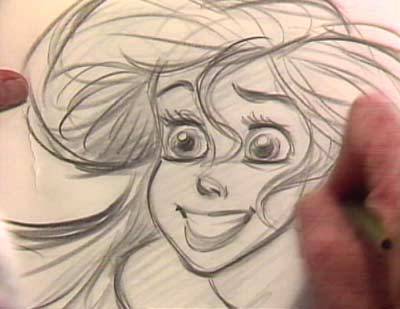 The Little Mermaid marks the beginning of the Disney Renaissance. To pay tribute to this true work of art, this week’s Disney classic is dedicated to the stubborn red headed Ariel who has the courage and conviction to follow her dreams.
The Little Mermaid marks the beginning of the Disney Renaissance. To pay tribute to this true work of art, this week’s Disney classic is dedicated to the stubborn red headed Ariel who has the courage and conviction to follow her dreams.This Disney feature came to theatres in 1989. Glen Keane a lead animator at the Dinsey studios embodies the vivacious teenager’s character in simple words: “a struggle to be free”;words that everyone can identify with at some point in their lives.
This feature was inspired by the original fairytale written by Hans Christian Andersen; with a few magical tweaks, this storyline was modified for the Disney audience.
Andres Deja another leading animator at the Disney Studios who acts as a Directing Animator explains the character of the loving parent King Triton. The talented animator rightly says simply put, the king likes to be in control. An identifiable feature in the parent child relationship I think.
Here’s an interesting fact about Disney: ever since Snow White, the studio has had human studies to show them how characters should move and dance.
Ariel’s realistic facial impressions where captured with the use of this techinque as the Disney artists mimicked her features from a live screen test of a model in the same staging as was required in the actual feature-an example of this is the “Part of Your World(Reprise)” song by Ariel. The main movements of her character where mimicked from live shots.
The talented Ron Clemens and John Muskeer wrote and directed this timeless story.
The two artists discuss an element of animation that is important to the artists and the film itself-character voicing.
Here’s another little insight into the world of animation according to the Masters, Clemens and Muskeer-it is critical that the animator’s are inspired by the voice actors as this in turn inspires the look of the character. The voice adds so much charcter to the animated personality. Also interesting to note, is that the voice is done before the character itself as the actors help to bring these characters to life through their individual voices and habits. The Disney animators subtely use their distinct body features and voices, to add an illusion of life into the animated character.
This movie is equally played by talented actors. Jodi Benson plays the part of Ariel in this while Christopher Barnes plays Prince Eric.
The actor gives an insightful description of what it feels like to play the part of an animated character:
I walked in there; I saw a stool, I saw a stand, I saw some papers and it was a big empty studio.
Andres Deja describes the hope of the animators in Disney is to make sure that their characters have to be seen as close to human as possible; as having ‘flesh and blood’. I think its safe to say that this feature certainly has that element of reality to it, even though it is at the end of the day a bunch of animated characters moving on screen. I believe this shows the true talent of the Disney artists-their ability to turn hand drawn characters into creatures of substance and vitalitty.
Glen Keane animates Ariel in this movie. Keane, one of Disney’s respected animators, explains his goal with Ariel was to bring expression into her face and make her to appeat thoughtful. Well, those big blue eyes of hers certainly look like their up to mischief half the time! An additional praise to the Disney artist’s there I guess.
Howard Ashman and Alan Mencken, once more lend their talented hands to the Disney studio for this feature adaptation as they composed the memorable songs of ‘The Little Mermaid’.
Howard Ashman states that in almost every musical ever written, there’s usually a place quite early where the leading lady sings about what she wants; and the audience roots for her to get it for the rest of the night.
That is certainly the case for one of the key songs in this feature, ‘Part of Your World.’
 More memorable characters from this feature are: Scuttle the lovable seagull who was played by Buddy Hackett-anyone see the genous resemblance?- and ofcourse the manipulative Ursula who was played by Patt Carroll-see the resemblance? Arent the artists genius?
More memorable characters from this feature are: Scuttle the lovable seagull who was played by Buddy Hackett-anyone see the genous resemblance?- and ofcourse the manipulative Ursula who was played by Patt Carroll-see the resemblance? Arent the artists genius?Kathy Zielinski animates this fascinating creature.
Question Time...is Ursula a squid or an octupus?...Squid! Thought she was an octupus as well. Her slimy tentacles where used to accentuate movement.
The adorable Flounder and hilarious Sebastian add some humour to this enchanting fairytale.
Sebastian the Crab added to the musical element of this feature. According to Ashman, in order to add to the flavour of the film, Sebastian had some Jamaican roots as is obvious from his musical use of words, to add a fun, energetic and truly diverse feature to the fairytale.
Here’s to the Little Mermaid! One of Disney’s best feature adaptations that captured the hearts of audiences worldwide!
Tolu Falode.



No comments:
Post a Comment